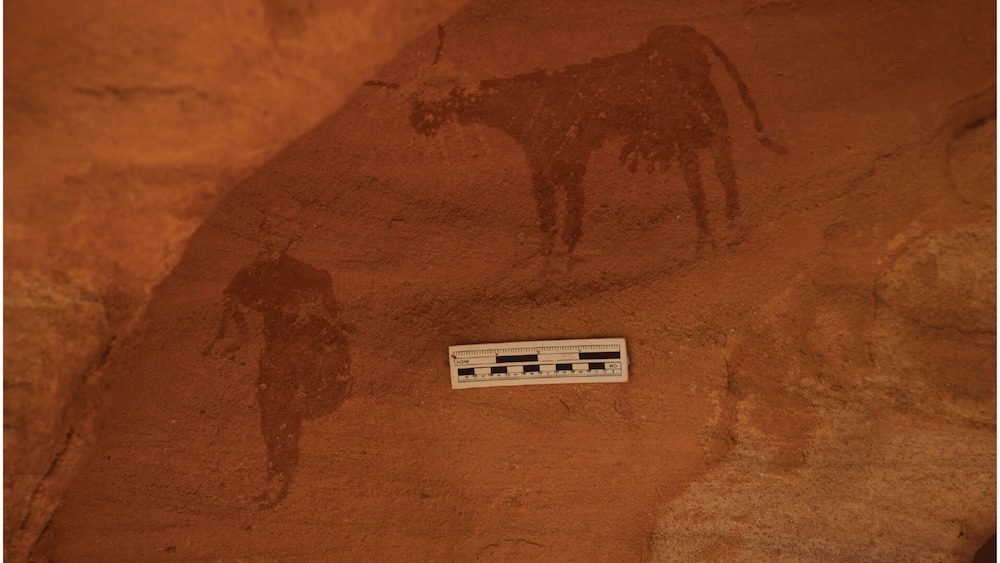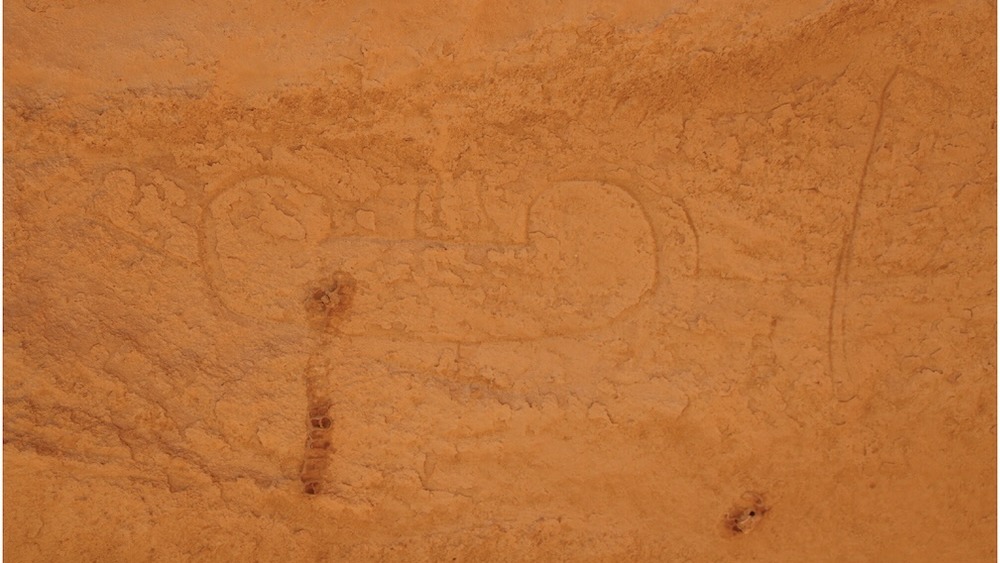4,000-year-old rock art of boats and cattle unearthed in Sudan paint a picture of a green Sahara
Thousands of years ago, a large swath of the Sahara may have been a green grassland ideal for raising cattle.

Deep in the Sahara, ancient rock art depicts a fleet of boats and cattle, providing a glimpse of the desert's green past before climate change transformed the region thousands of years ago.
Archaeologists were surprised to discover the out-of-place artworks from 16 new rock sites in the middle of the Eastern Desert (also known as the Atbai), a sandy and barren landscape that is part of the Sahara and stretches across eastern Sudan, according to a study published Nov. 28, 2023, in The Journal of Egyptian Archaeology.
The site's location is surprising for two reasons: It's far from the nearest body of water, Lake Nubia, which sits more than 60 miles (97 kilometers) away, and the arid landscape is not ideal for raising livestock like the large-horned cattle featured in the drawings, the study authors said.
"The cattle rock art is very significant, as cattle can no longer live in this hyper-arid desert," lead author Julien Cooper, an Egyptologist, Nubiologist and archaeologist at Macquarie University in Sydney, told Live Science in an email. "It tells us that the people that made the art had a close connection to cattle."
However, researchers think the artworks' subject matter — particularly a single drawing of a cow being led by a herder — provides clear evidence that this harsh landscape was once a far more hospitable grassland.
Related: Remains of ancient temple with hieroglyphic inscriptions discovered in Sudan
"This is one of the best classes of evidence for establishing climate change in the region, a period which scientists call the 'African humid period,'" Cooper said. "In this period before 5,000 years ago, the Sahara was much wetter, and cattle herders roamed the deserts in search of pasture. Today only hardier animals like camels and goats can survive in this desert."
Sign up for the Live Science daily newsletter now
Get the world’s most fascinating discoveries delivered straight to your inbox.

Because many of the drawings were chiseled into the rock, archaeologists think that whoever created them was likely in the area for a while.
"The boat art is quite different, and we think it has something to do with people from the Nile River who journeyed into the desert," Cooper said. "Some of these people may have also been riverine pastoralist herders who temporarily made the desert their home, while others may have journeyed into the desert in search of mineral wealth, particularly gold. At this stage we cannot know for sure."
Archaeologists think the rock art was made prior to the "African monsoon," which transformed the area into the desert it is today, forcing people to move to greener pastures along the Nile, according to the study.
After 3,000 B.C., the "local desert became too dry for regular cattle herding," Cooper said. "Scholars think that this was a watershed moment in the history of the wider region — some of these cattle herders remained in the desert but exchanged their cattle for hardier animals like goats, while others left the desert for the Nile where they would play part of the story of the formation of urban states in Egypt and Nubia. In short, this drying period is the most wide-reaching historical event in the prehistory of North Africa and changed societies irrevocably."
Jennifer Nalewicki is former Live Science staff writer and Salt Lake City-based journalist whose work has been featured in The New York Times, Smithsonian Magazine, Scientific American, Popular Mechanics and more. She covers several science topics from planet Earth to paleontology and archaeology to health and culture. Prior to freelancing, Jennifer held an Editor role at Time Inc. Jennifer has a bachelor's degree in Journalism from The University of Texas at Austin.










